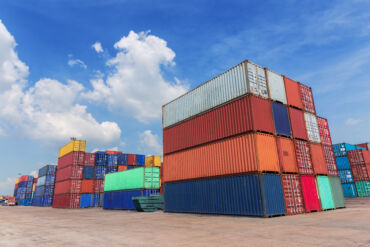The Export Control Reform Act of 2018 (ECRA) allowed the Bureau of Industry and Security (BIS) of the U.S. Department of Commerce to address concerns raised in the National Security Strategy (NSS) in 2017 and again in 2018. These concerns related to unfair trade practices and loopholes in the Export Administration Regulations (EAR), which allowed countries such as China and Russia to support their national objective rather than use products for their intended commercial use.
However, even with the passage of ECRA in 2018, U.S equipment and technology continued to be exported to countries where its use has been diverted from commercial to military. Loose definition and usage of the terms “civil” and “military” have allowed diverting exported U.S equipment and technology for military programs under the pre-text of civil programs. There is increasing concern that the blurring line between civil and military usage leads to a plethora of U.S. national security problems.
To address these security concerns, on April 28, 2020, BIS published two final rulings (85 FR 23459 and 85 FR 23470) that put the agency in a position to deny, restrict, or condition the export of a wide range of items and technology/software. These EAR updates enter into force on June 29, 2020.
In the first rule, BIS eliminated the usage of a license exception based on Civil End Users (CIV). In the second rule, it expanded the scope of “Military End User” related control policies for exports to China, Russia, and Venezuela.
Civil End Users license exception – Revocation and its impacts
There are a total of 23 countries in D:1 grouped under “National Security” and commodities like semiconductor, bearings, and electronic items, which companies are allowed to export to D:1 countries (except North Korea) without license as long as they are intended for a Civil End User. But as the focus turns on “civil-military fusion,” BIS has decided to eliminate the exception altogether.
Beginning, June 29, 2020, exporters will no longer be available to use CIV. All the affected ECCNs (approx. i.e. 29 ECCNs) eligible for CIV have national security as the reason for control. Removal of CIV will directly impact and require exporters to apply for a license, as the new rules strictly define items controlled for national security.
Expansion of military restrictions – How one term, “Military End Use,” puts China, Russia, and Venezuela trade under heightened scrutiny
After scrapping the Civil End User exception, BIS published the second rule to highlight the same concern of increased use of U.S. technology by other countries to expand their military base, focusing specifically on China, Russia, and Venezuela. This second rule focuses on the U.S. policy outlined in the 2017 NSS that ‘‘China and Russia challenge American power, influence, and interests, attempting to erode American security and prosperity.” It specifically puts restrictions on China, Russia, and Venezuela for items controlled for “Military End Use” and “Military End User” reasons. However, BIS’s response begs the following question: Why only China, Russia, and Venezuela?
The answer again is underlined in the NSS, which empowered BIS to strengthen the American economy with passage of the ECRA in 2018:
They [China and Russia] are determined to make economies less free and less fair, to grow their militaries, and to control information and data to repress their societies and expand their influence. . . . Both China and Russia support the dictatorship in Venezuela and are seeking to expand military linkages and arms sales across the region.
BIS updated the EAR to include the list of specific items in “Supplement 2 to 744.21,” which are controlled for military restriction. Inclusion of new items (i.e., approx. 17 new ECCN entries) in the supplement limits the scope of license exception previously available.
These license requirements broaden criteria for exports, reexports, and transfers (in-country) of items intended for Military End Use or Military End Users, as defined in “Control Policy: End-User and End-Use Based of the Export Administration.” The changes in the term “military end use” include in its definition all the activity related to “use” as defined in the EAR, such as operation, installation, maintenance, repair, overhaul, refurbishing, development, or production of military items.
New “regional stability” reason for controls for 600 Series and 9×515
Under the expansion of Military End Use and Military End User, restrictions on “600” Series and 9×515 items, which already have some of the hardest export conditions, were tightened. BIS introduced a new reason for control under the heading of “Regional Stability.”
“Regional Stability – China, Russia, or Venezuela” has been created under EAR 742.6 to support U.S. foreign policy to maintain regional stability. It restricts “.y” paragraph of approx. 31 “600” Series and 7 “9×515” items to export to China, Russia, and Venezuela.
There is an exception to the new rule for certain items for exports or re-exports to Russia for use in, with, or for the International Space Station (ISS), including launch to the ISS. This exception is covered on the individual level mentioned under heading of ECCN in the Commerce Control List (CCL).
How do companies prepare for the changes?
For companies and exporters dealing in the trade of items and technologies with D:1 countries (including China and Russia) that have previously used or are currently using Civil End Users License Exceptions, they must take immediate action to align and familiarize themselves with the process of applying for a license, as well as the obligations of paperwork and past reports.
The compliance team must redefine the license process, re-evaluate to check the status of other licence exceptions if available, and determine the direct impact of both rules. With the increased need to apply for a license and increased scrutiny as the scope of restrictions has expanded, the task of complying with the ever-changing rules has become even more complex. It also has supply chain implications.
There are significant impacts on Electronic Export Information (EEI) filing requirements because exporters will need to apply for licenses for certain exports to China, Russia, and Venezuela, regardless of the value of items. The Automated Export System (AES) will require a valid ECCN. The new regulations also remove the exception of $2,500 rule, which allowed companies to export items valued under this amount without a license. Export management software can help companies comply with these new rules by automating the process.
In addition to the new EAR rules, BIS also published a proposed rule that would restrict License Exception APR for D:1 countries. Reuters reported that the U.S. administration raised concerns about dual-use trade with Hong Kong and China, which would make the export trade compliance world even murkier.









